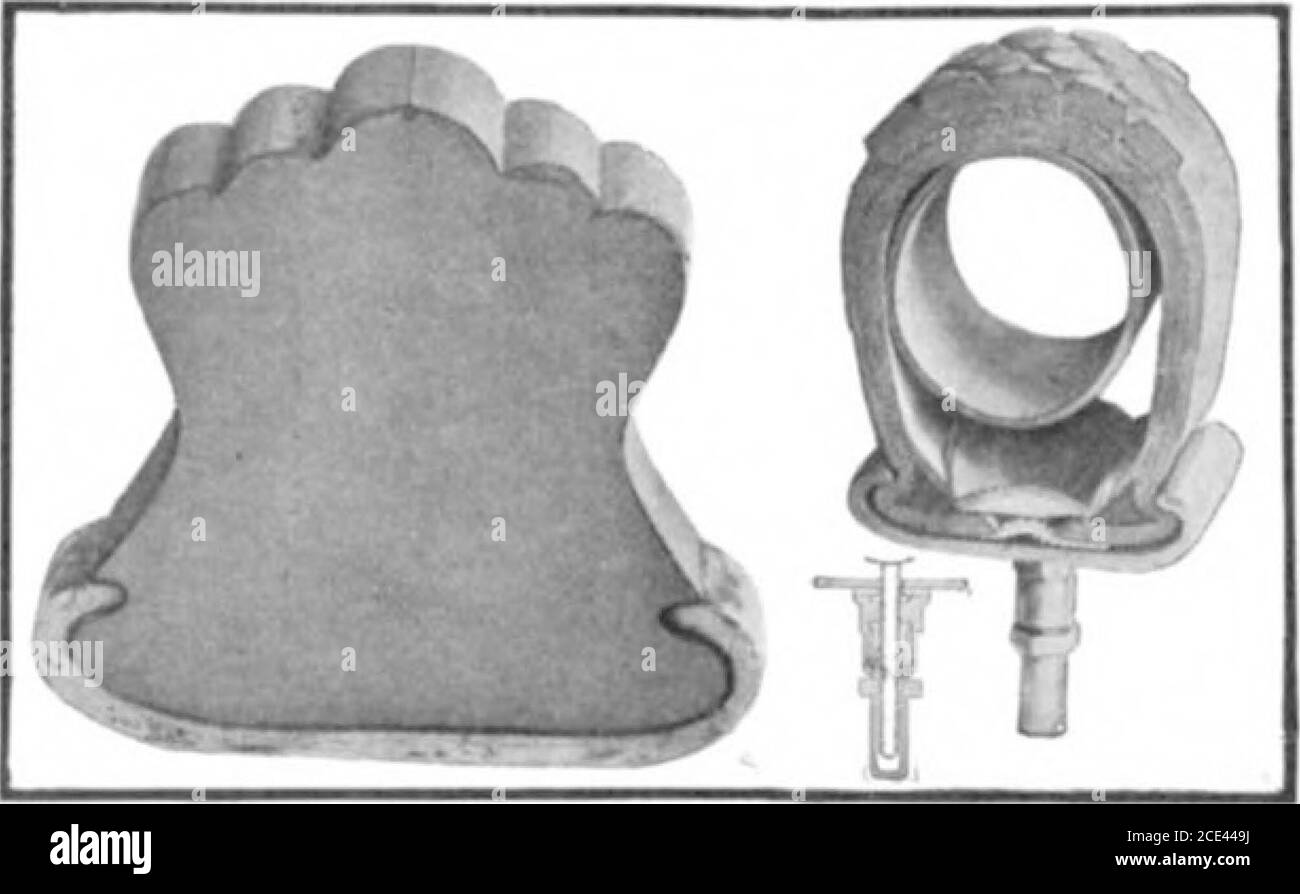. Scientific American Volume 92 Number 04 (January 1905) . ds. Nor isthere any loss of power from slipping wheels.A new- type of double bronze nut and lock nut,shown in cross-section in the illustration, isused for securing the lugs on the Goodrichtires. Being made of brass, these nuts willnot rust and be difficult of removal. Further-more, as the inner end of the lock nut islarger than the hole in the first nut,through which the lock nut stem ispassed, it cannot separate from the nut proper andbecome lost, although it can be unscrewed separately. A typical non-skidding tire built on the lines

Image details
Contributor:
Reading Room 2020 / Alamy Stock PhotoImage ID:
2CE449JFile size:
7.1 MB (167.1 KB Compressed download)Releases:
Model - no | Property - noDo I need a release?Dimensions:
2009 x 1243 px | 34 x 21 cm | 13.4 x 8.3 inches | 150dpiMore information:
This image is a public domain image, which means either that copyright has expired in the image or the copyright holder has waived their copyright. Alamy charges you a fee for access to the high resolution copy of the image.
This image could have imperfections as it’s either historical or reportage.
. Scientific American Volume 92 Number 04 (January 1905) . ds. Nor isthere any loss of power from slipping wheels.A new- type of double bronze nut and lock nut, shown in cross-section in the illustration, isused for securing the lugs on the Goodrichtires. Being made of brass, these nuts willnot rust and be difficult of removal. Further-more, as the inner end of the lock nut islarger than the hole in the first nut, through which the lock nut stem ispassed, it cannot separate from the nut proper andbecome lost, although it can be unscrewed separately. A typical non-skidding tire built on the lines ofmost French tires of this kind is made by the RepublicRubber Shoe and Tire Company, of this city. Thetire has vulcanized to it a leather band filled withsteel rivets that stop all skidding and protect the tire. tern called the Mors system was recently describedin these columns. This apparatus, however, pos-sesses the fault of being rather too compli-cated for an unskilled man to understand and oper-ate. We illustrate herewith a simpler system invented. SWINEHART SOLID CLINCHER TIRE AND GOODRICH DETACHABLE NON-SKID TIRE WITH TWO-PIECE UNITED LUG. by Mr. Alden L. McMurtry, of this city. This systemwas used recently in modified form at the hill-climbingcontest at Eagle Rock. It is also being used during thepresent week at Ormond Beach, Florida. Briefly, the system comprises a line circuit runningalong the course, which is closed by automobiles inpassing over wires stretched across the course, at thestart, quarter mile, half mile, kilometer, etc., or at anyother intervals required. The impulse sent over theline on closing the circuit operates, through a relaycircuit, a series of stop watches at the main timing Tetejdwnci